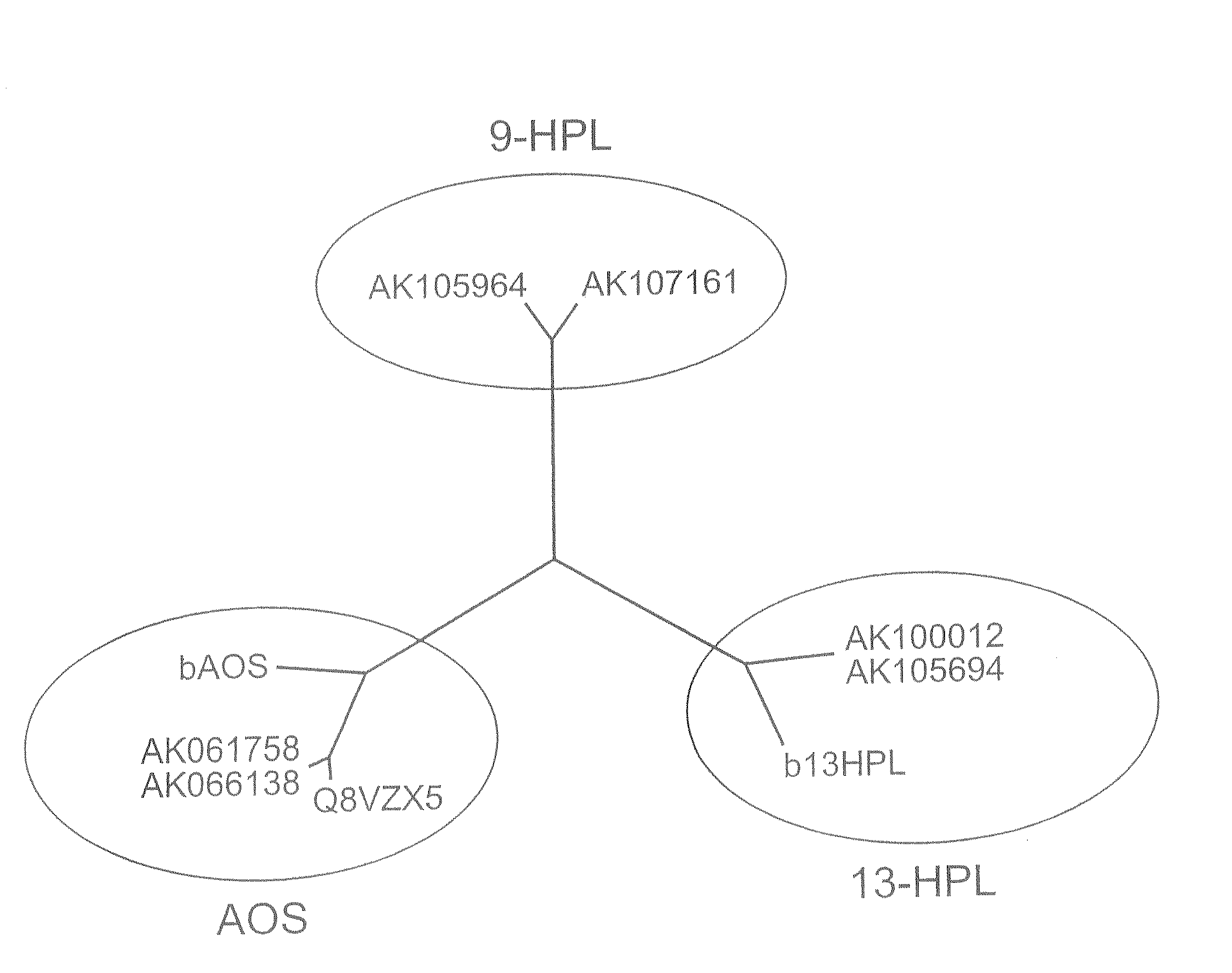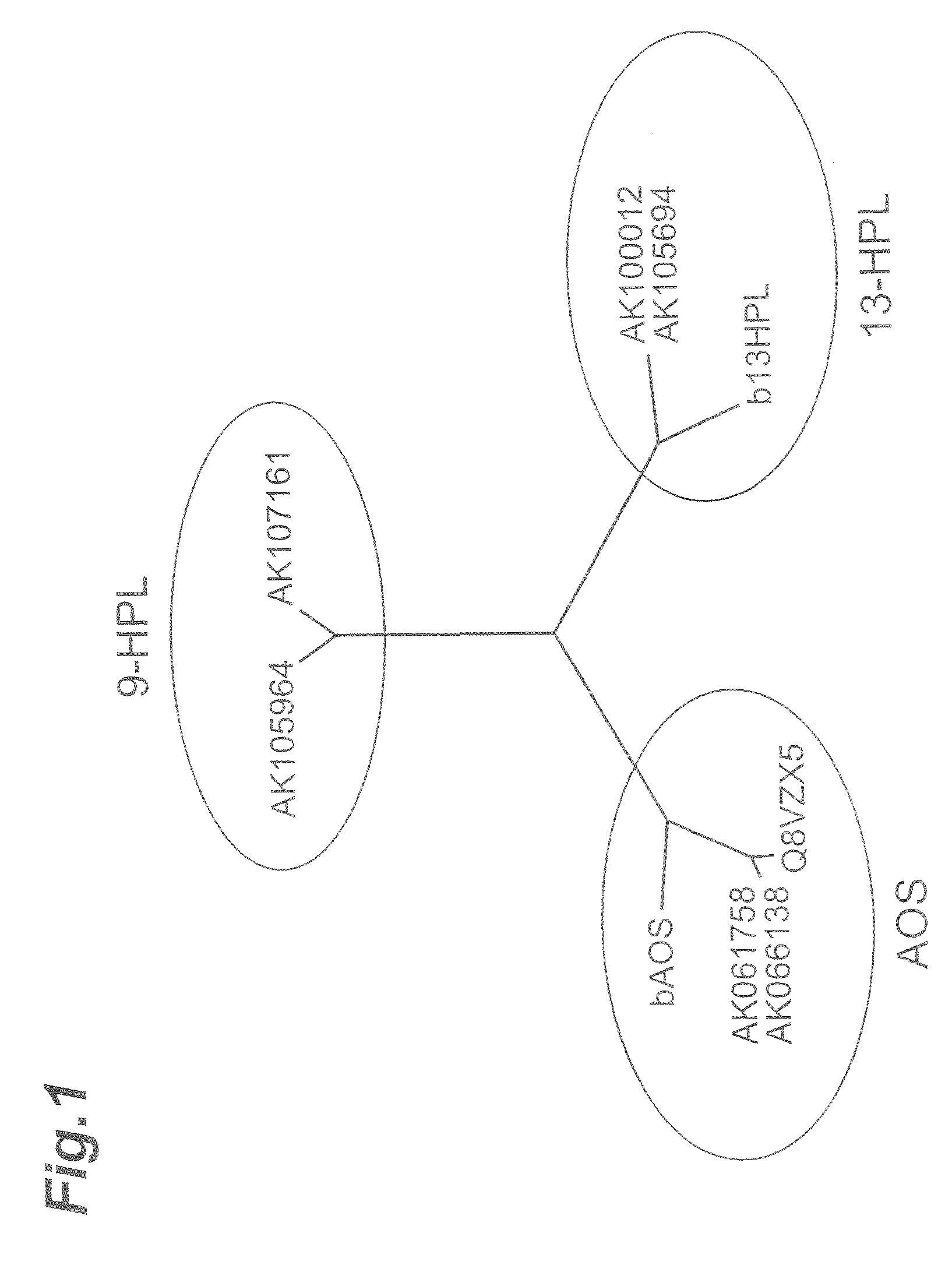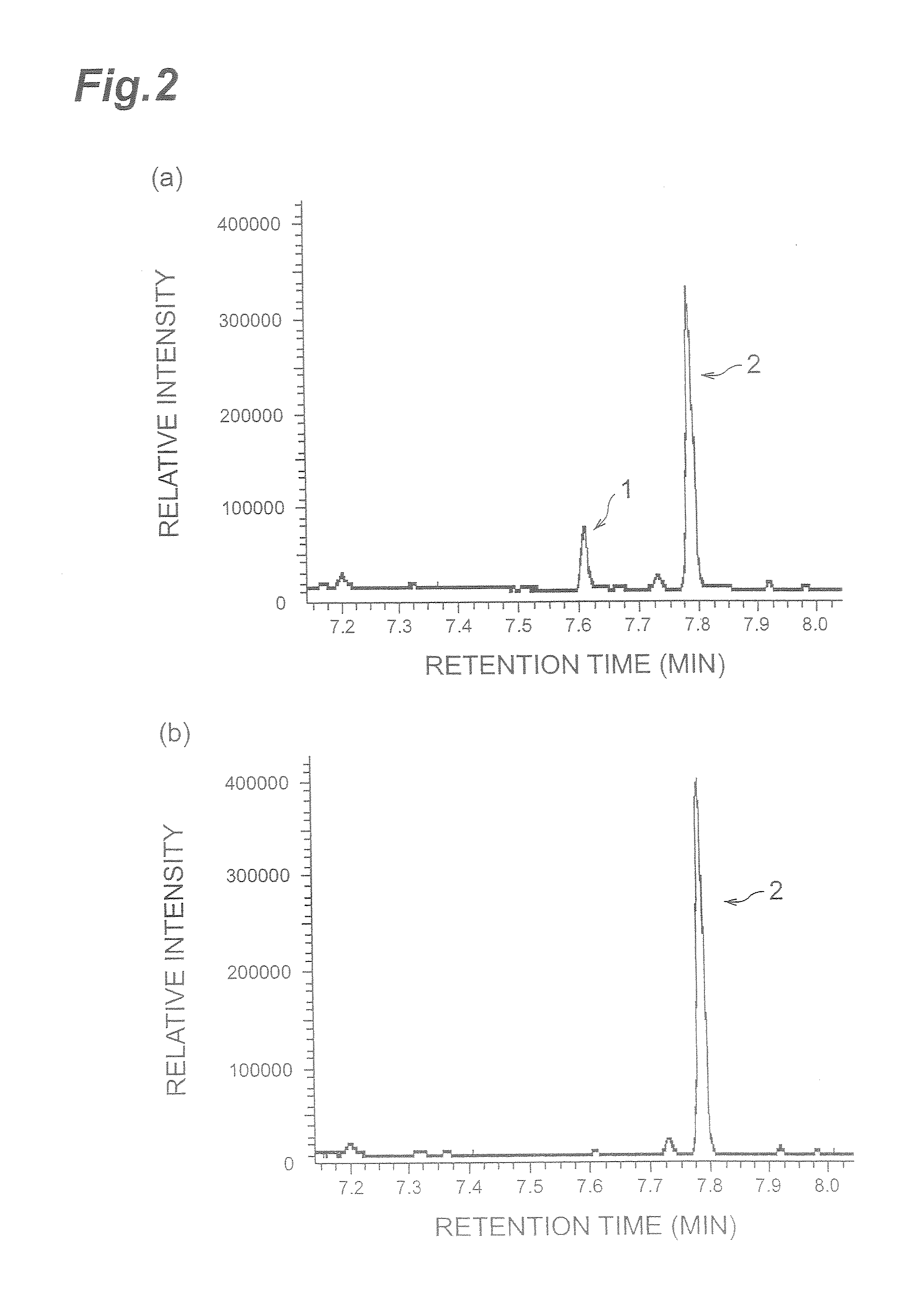9-Fatty Acid Hydroperoxide Lyase Genes
a technology of lyase genes and fatty acids, applied in the direction of lyases, sugar derivatives, organic chemistry, etc., to achieve the effect of low stability and activity, and preservation of flavor over tim
- Summary
- Abstract
- Description
- Claims
- Application Information
AI Technical Summary
Benefits of technology
Problems solved by technology
Method used
Image
Examples
example 1
[0033]Using barley 13-fatty acid hydroperoxide lyase (CAC82980), barley rice allene oxide synthetase (CAB86383, CAB86384) and rice allene oxide synthetase (Q8VZX5, Q940D7), which are functionally known genes, homologous proteins were extracted using the protein-protein BLAST program in the database of NCBI (National Center for Biotechnology Information) and KOME (Knowledge-Based Oryza Molecular Biological Encyclopedia), setting an E-value=e−10 as a threshold.
[0034]As a result, rice cDNAs AK105964 and AK107161 were newly extracted. When a molecular genealogical tree was created on an ExPASy Molecular Biology Server using ClastaIW, the molecular genealogical tree shown in FIG. 1 was obtained. As shown in FIG. 1, the two newly extracted genes were classified into clearly different groups from the allene oxide synthetase gene (AOS) and 13-fatty acid hydroperoxide lyase (13-HPL), and it was expected that they would have different enzyme functions from those of AOS and 13-HPL. Since AK105...
example 2
[0035]After extraction of total RNA from rice (strain: Nipponbare) using a Tripure Isolation Reagent (Roche), PolyA+ RNA was purified using an Oligotex-dT30 mRNA Purification Kit (TAKARA Bio). RT-PCR was performed using two primers (5′-gcggatccatggcgcgccgccgcgagccaa-3′ (SEQ ID No: 3) and 5′gcgaattcccgcaccaacactcgccgctc-3′ (SEQ ID No: 4)), and subcloning into pUC118 was performed. The full length sequencing was performed, and it was confirmed that the sequence matched AK105964. Next, the structural gene of AK105964 was sub cloned between the BamHI site and EcoRI site of pRSETA (Invitrogen), and introduced into the E. coli strain BL21(DE3)pLys.
[0036]For expression of E. coli and preparation of a crude extract the method disclosed in Kuroda et al., Characterization of factors that transform linoleic acid into di- and trihydroxyoctadecenoic acids in mash, J. Biosci. Bioeng., 93: 73-77, 2002, was used. Specifically, isopropyl-β-thiogalactopyranoside was added to 50 ml of culture medium (...
example 3
[0043]Next, the catalytic activities of the following fatty acid peroxides of AK105964 (and AK107161) (all peroxides were contained in rice), were analyzed: 13(S)-hydroperoxy-9(Z),11(E)-octadecadienoic acid (13-HPOD), 9(S)-hydroperoxy-10(E),12(Z),15(Z)-octadecatrienoic acid (9-HPOT) and 13(S)-hydroperoxy-9(Z),11(E)15(Z-octadecatrienoic acid (13-HPOT). As in Example 2, an enzyme extract and the fatty acid peroxide were reacted together, and the obtained product was analyzed by GC-MS.
[0044]The obtained chromatograms are shown in FIGS. 5. (a), (b) and (c) are GC-MS chromatograms of the products obtained by reacting with 13-HPOD, 9-HPOT and 13-HPOT, respectively. As shown in FIGS. 5(a)-(c), hexanal was produced from 13-HPOD, (2,6)-nonadienal was produced from 9-HPOT, and (3Z)-hexenal and (2E)-hexenal was produced from 13-HPOT. The obtained aldehydes may be responsible for the off-flavor of foods, and it can be expected that the quality of rice will be improved by suppressing the express...
PUM
 Login to View More
Login to View More Abstract
Description
Claims
Application Information
 Login to View More
Login to View More - R&D
- Intellectual Property
- Life Sciences
- Materials
- Tech Scout
- Unparalleled Data Quality
- Higher Quality Content
- 60% Fewer Hallucinations
Browse by: Latest US Patents, China's latest patents, Technical Efficacy Thesaurus, Application Domain, Technology Topic, Popular Technical Reports.
© 2025 PatSnap. All rights reserved.Legal|Privacy policy|Modern Slavery Act Transparency Statement|Sitemap|About US| Contact US: help@patsnap.com



